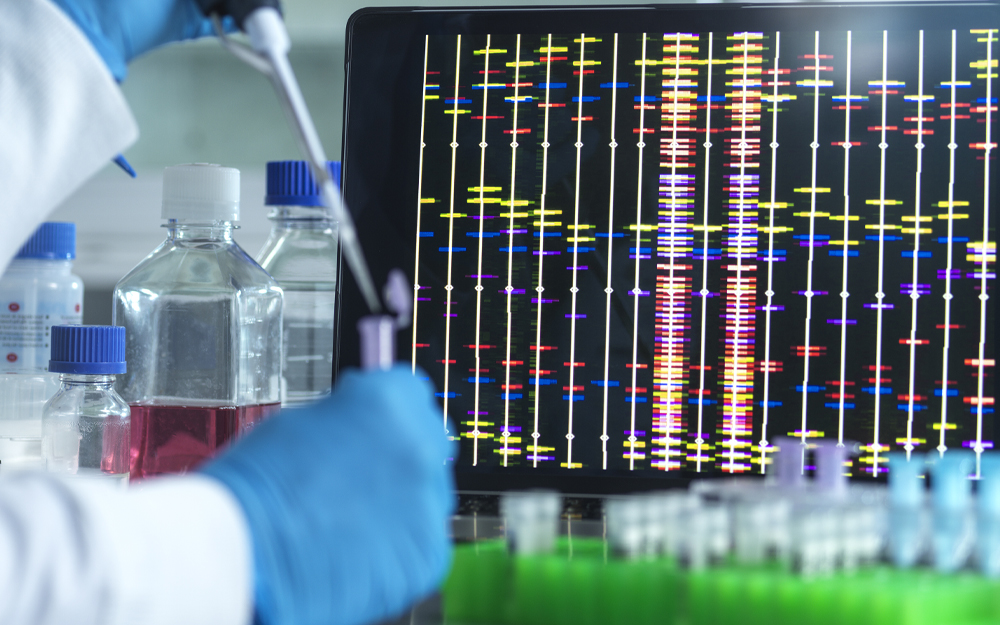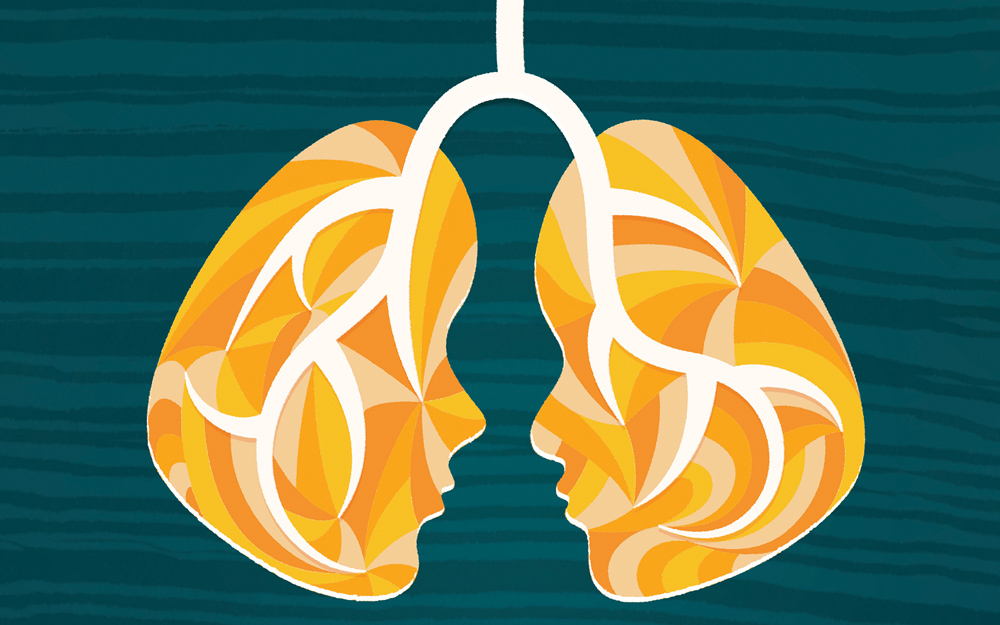Seeing Pink: Awareness Ribbons a Troubling Reminder to Some
Date
October 3, 2023

Date
October 3, 2023
Credits
Medical providers featured in this article
In Brief
{{cta-block}}
During Breast Cancer Awareness Month, pink ribbons appear on everything from snack packs and cereal boxes to T-shirts, shopping bags and kids’ socks during Little League games. Unfortunately, for some breast cancer patients, survivors and even their friends and family members, seeing pink is more disquieting than comforting.
“It seems like 90% of my patients are triggered during Breast Cancer Awareness Month, particularly those who are in active treatment or in the early stages of their survivorship,” said Nicole Kagy, a licensed clinical social worker at Cedars-Sinai. “These patients are well aware of the devastation breast cancer causes—and they don’t want to see reminders of it everywhere.”
The Pink Ribbon Origin Story
The pink ribbon movement began as a grassroots effort in the early 1990s when 68-year-old Charlotte Haley handmade peach ribbons to raise awareness about the lack of funding for cancer prevention research. SELF published a story about her endeavor and later requested the rights to her peach ribbon.
Despite offers from SELF, Estee Lauder and other corporate giants, Haley, whose family tree was riddled with breast cancer, didn’t want to go commercial. So, in 1991, the editors at SELF created a ribbon in another color: pink. In short order, pink ribbons became the international symbol of breast cancer awareness—and federal funding for breast cancer research increased dramatically alongside the number of women getting annual mammograms.
“The pink ribbon means well—it’s bringing awareness to breast cancer and screening exams,” said Kagy. “But we’re already there. People are already getting screened. They’re already doing self-exams. What patients really want to know is whether the money spent during Breast Cancer Awareness Month is funneling into research that will save lives.”
What to Do if Pink Ribbons Trigger You
Pink-tober can be an emotionally taxing time for all sorts of people—not just patients and breast cancer survivors. If you find the sea of pink disconcerting, these strategies may help you stay grounded:
Designate a point person. If you have breast cancer, talking about your diagnosis over and over again can be overwhelming.
“Putting one trusted person in charge of disseminating information can alleviate stress and helps people show up for you in ways that feel supportive,” Kagy said.
Keep a note in your phone. In the weeks leading up to October 1, make a list of things that will be helpful when you’re anxious. Maybe practicing yoga or taking a candlelit bath helps quiet your mind. Or maybe watching a comedy makes you feel lighter and less stressed. Include things you can do when you’re short on time, too, like taking three deep breaths or closing your eyes and calling up a beautiful image in your mind.
“Everyone’s list will be different, but it’s important to have one handy because when the stress response kicks in, you won’t be able to access your rational mind,” Kagy said.
Come up with a simple statement. If you’re in active treatment or just beginning your survivorship, you may feel like your phone is blowing up during the month of October.
“People mean well, and they want to express their love, but if you feel overwhelmed, it’s OK to turn off your notifications,” Kagy said.
Another strategy: Come up with a simple statement that you can copy and paste for emails and texts, or repeat aloud like a broken record—something like “I’m doing well … and I don’t want to give cancer one minute of airtime. Instead, I’d really love to hear about you!”
Get grounded. When you feel like you’re spiraling, mindfulness strategies can help you remain grounded. One of Kagy’s favorite techniques is “5, 4, 3, 2, 1,” a mindfulness practice that involves noting five things you can see in your immediate surroundings, four things you can touch, three things you can hear, two things you can smell and one thing you can taste.
Be clear about your needs. Decide what you need given your personality, circumstances and aversion or appreciation for the pink ribbon—and communicate those needs to friends and family. Maybe you don’t want cancer to be part of the conversation unless you bring it up. Or maybe you don’t want anyone to wear a pink ribbon on your behalf. Your needs matter, but they’ll only be met if you’re able to communicate them.
Find a distraction. If seeing pink sends your emotions into overdrive, find something to distract yourself.
“Some people use a worry stone. Others recite a mantra. Still others come up with ways to keep their minds busy by listing their favorite movies or books in their head, or counting squares on the tile floor,” Kagy said. “The intention isn’t to erase your anxiety, but to help patients stay in their bodies so they can be present in their surroundings.”
Practice radical self-care. It’s common for breast cancer patients and survivors to judge their experiences and the way they’re processing them.
“There’s a culture of toxic positivity around cancer, and that can be emotionally draining,” Kagy said. “Cancer is complicated, and every patient has to figure out what feels most supportive for their unique circumstances.”
It’s also important to remember that there’s no timeline for grief that cancer brings. Survivors who are years past diagnosis can get triggered without warning.
Toward a More Conscious Pink Movement
Many companies adorn their products with pink ribbons during the month of October to raise funds and awareness for breast cancer research. But some organizations sporting pink aren’t doing anything to advance breast cancer research and treatment.
“They’re slapping pink ribbons on their products to maximize profits,” Kagy said. “Breast Cancer Action even coined the term ‘pinkwashing’ to describe companies that claim to care about breast cancer by placing pink ribbons on their products while at the same time producing, manufacturing or selling products containing chemicals that are linked with the disease. That’s why it’s so important for people to be conscious consumers in terms of where and how they spend their charitable dollars.”
You don’t have to sport a pink ribbon on your shirt, participate in a fundraising walk or donate time or money to verified breast cancer organizations to make a difference in the breast cancer world. Some survivors volunteer to support newly diagnosed breast cancer patients by driving them to appointments, knitting beanies or even just sharing their own experiences. Others donate their wigs and scarves to newly diagnosed patients.
“It’s about using your unique gifts, resources, talents and interests to raise awareness and funds for a disease that affects all of us,” Kagy says.





